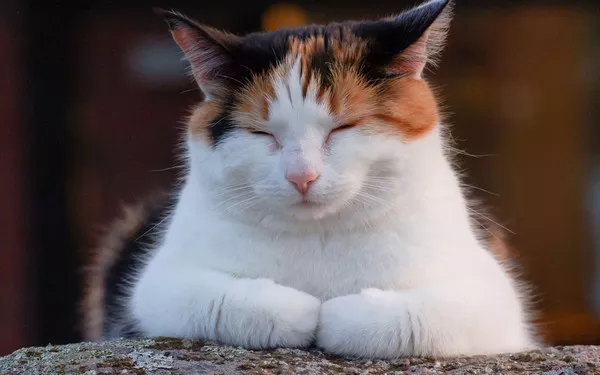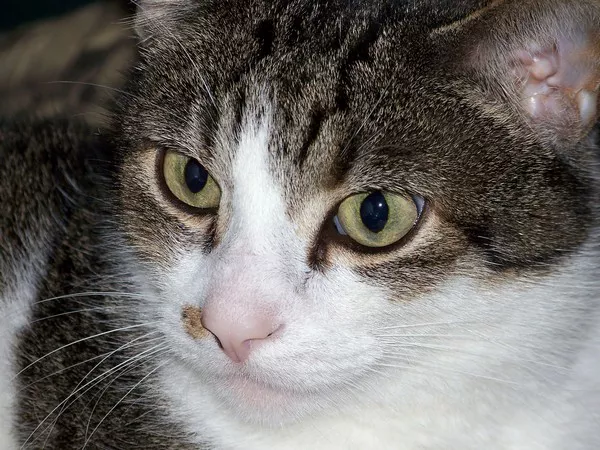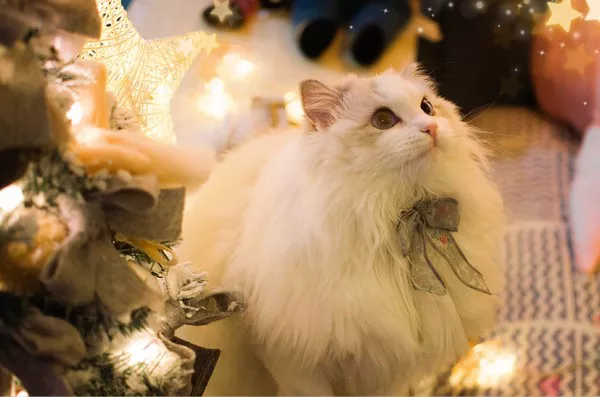Calico cats, with their distinctive tri-color coats and captivating personalities, have long been a source of fascination and admiration among cat enthusiasts. However, pet owners may notice changes in their calico cat‘s coat color over time, leading to questions about why their once vibrant hues are becoming darker. In this comprehensive guide, we delve into the factors influencing changes in coat color in calico cats, exploring genetic inheritance, environmental influences, and potential health considerations to provide valuable insights for concerned cat owners.
Understanding Calico Cats: A Riot of Colors
Calico cats are characterized by their unique coat patterns, which consist of three distinct colors: white, black, and orange (or variations thereof, such as cream or ginger). These cats exhibit a patchwork of colors distributed irregularly across their bodies, creating a visually striking appearance. The distinctive coat pattern of calico cats is the result of genetic inheritance and the expression of certain coat color genes.
Genetics of Calico Coat Color
The coat coloration of calico cats is governed by a combination of genetic factors, including sex-linked genes and polygenic inheritance. The primary determinant of calico coat color is the presence of the X-linked orange (O) and non-orange (o) alleles, which determine the production of orange pigment (pheomelanin) in the fur.
Female calico cats typically possess two X chromosomes (XX), one of which carries the orange allele and the other the non-orange allele. As a result, female calico cats exhibit a mosaic of black and orange patches, with white areas interspersed throughout the coat. Male calico cats, which are rare and typically sterile due to their genetic makeup (XO or XXY), can also display calico-like patterns if they possess an extra X chromosome.
In addition to the orange and non-orange alleles, other genes and modifiers influence the distribution and intensity of coat colors in calico cats. These include genes responsible for white spotting, tabby striping, and dilution of colors, which contribute to the overall appearance of the coat.
Factors Influencing Changes in Coat Color
While the genetic basis of calico coat color remains constant throughout a cat’s life, changes in environmental factors, age-related processes, and health conditions can affect the appearance of the coat over time. Several factors may contribute to the phenomenon of a calico cat turning darker, including:
1. Sun Exposure: Prolonged exposure to sunlight can cause fading or darkening of fur colors in cats, including calico cats. Ultraviolet (UV) radiation from the sun can break down pigment molecules in the fur, leading to changes in color intensity or hue. Calico cats that spend a significant amount of time outdoors may experience darkening of their coat colors due to sun exposure.
2. Age-Related Changes: As cats age, they may experience changes in coat color and texture due to natural processes such as melanin production and hair growth cycles. Older calico cats may exhibit darkening of their coat colors as a result of decreased melanin production or changes in the distribution of pigment cells in the skin and fur.
3. Hormonal Influences: Hormonal fluctuations, such as those associated with pregnancy, lactation, or estrus (heat) cycles, can influence coat color changes in female calico cats. During pregnancy or lactation, hormonal changes may affect the expression of coat color genes and alter the appearance of the coat. Additionally, hormonal contraceptives or medications may impact coat color in cats.
4. Nutritional Factors: Diet plays a crucial role in maintaining the health and appearance of a cat’s coat. Nutritional deficiencies or imbalances in essential nutrients such as protein, vitamins, and minerals can affect coat quality and color. Providing a balanced and nutritious diet tailored to the specific needs of calico cats can help maintain vibrant coat colors and overall well-being.
5. Stress and Anxiety: Stressful events or environmental changes can trigger physiological responses in cats, including alterations in coat color and grooming behavior. Calico cats experiencing stress or anxiety may exhibit changes in coat quality, including dullness or darkening of fur colors. Creating a calm and enriching environment for calico cats can help reduce stress and promote healthy coat condition.
6. Health Conditions: Underlying health conditions or medical issues may also contribute to changes in coat color in calico cats. Skin disorders, hormonal imbalances, and metabolic diseases can affect melanin production, pigmentation, and hair growth, leading to alterations in coat coloration. Regular veterinary check-ups and monitoring can help detect and address potential health concerns affecting the coat.
Management and Care
While changes in coat color are often a normal part of a calico cat’s life, monitoring for any accompanying signs of illness or discomfort is essential. If a calico cat experiences sudden or dramatic changes in coat color, accompanied by other symptoms such as hair loss, itching, or skin lesions, veterinary attention should be sought promptly to rule out underlying health issues.
Maintaining a healthy and balanced diet, providing regular grooming and hygiene care, and minimizing stressors in the environment can help support overall coat health and appearance in calico cats. Additionally, providing adequate protection from sun exposure, such as providing indoor shelter or applying pet-safe sunscreen, can help prevent UV-related damage to the coat.
Regular veterinary check-ups and preventive care are essential for monitoring the health and well-being of calico cats and addressing any potential concerns affecting coat color or quality. By staying vigilant and attentive to changes in coat appearance and overall health, cat owners can ensure that their calico companions lead happy and healthy lives.
Conclusion
In conclusion, changes in coat color in calico cats can result from a combination of genetic factors, environmental influences, age-related processes, and health considerations. While the genetic basis of calico coat color remains constant, external factors such as sun exposure, hormonal fluctuations, and nutritional status can affect the appearance of the coat over time.
By understanding the factors influencing changes in coat color and maintaining vigilant monitoring of coat health, cat owners can ensure that their calico companions receive the care and attention they need to thrive. With proper management and preventive care, calico cats can continue to showcase their vibrant and colorful personalities throughout their lives. Remember, when it comes to coat color changes, attentive observation and proactive care are key to supporting the health and well-being of calico cats.


























